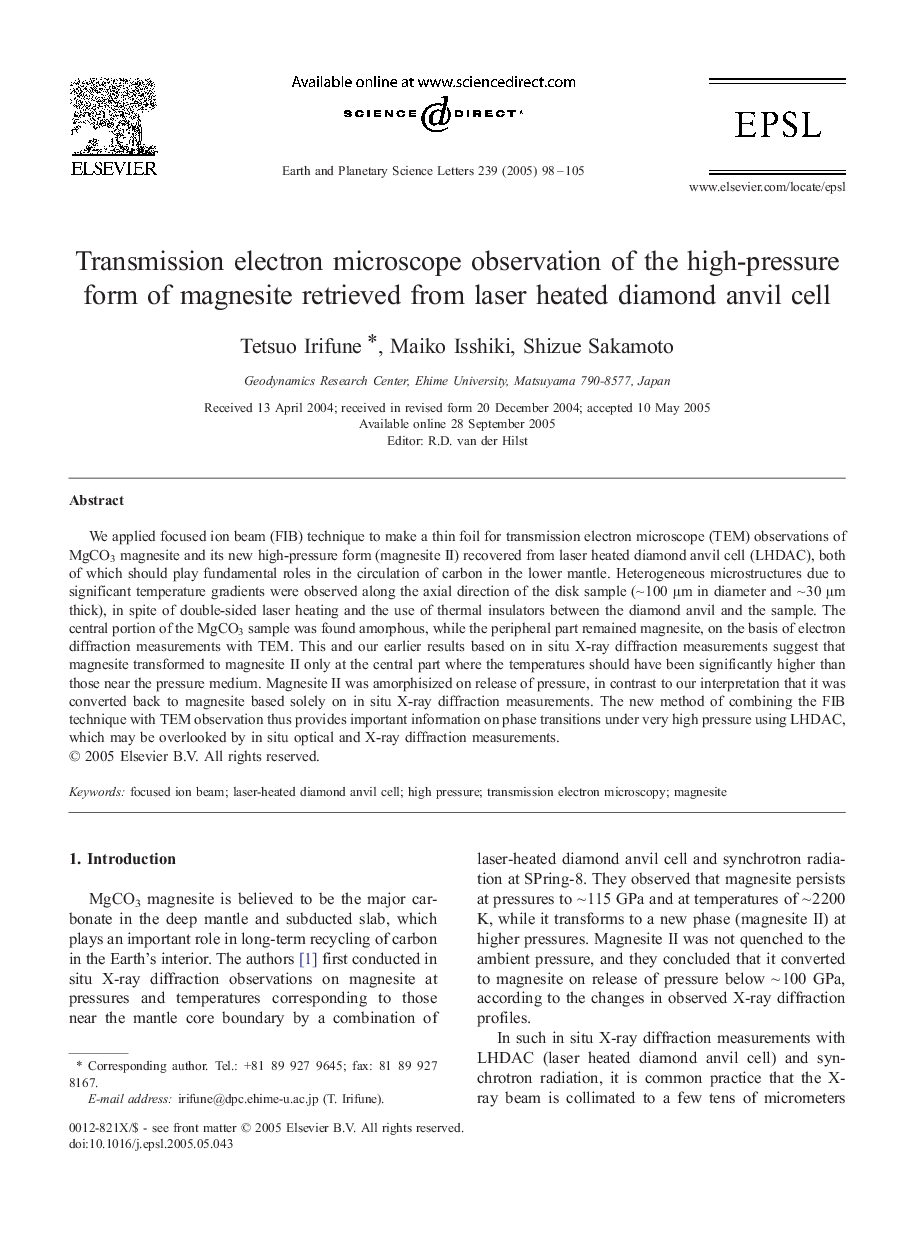| Article ID | Journal | Published Year | Pages | File Type |
|---|---|---|---|---|
| 9522485 | Earth and Planetary Science Letters | 2005 | 8 Pages |
Abstract
We applied focused ion beam (FIB) technique to make a thin foil for transmission electron microscope (TEM) observations of MgCO3 magnesite and its new high-pressure form (magnesite II) recovered from laser heated diamond anvil cell (LHDAC), both of which should play fundamental roles in the circulation of carbon in the lower mantle. Heterogeneous microstructures due to significant temperature gradients were observed along the axial direction of the disk sample (â¼Â 100 μm in diameter and â¼Â 30 μm thick), in spite of double-sided laser heating and the use of thermal insulators between the diamond anvil and the sample. The central portion of the MgCO3 sample was found amorphous, while the peripheral part remained magnesite, on the basis of electron diffraction measurements with TEM. This and our earlier results based on in situ X-ray diffraction measurements suggest that magnesite transformed to magnesite II only at the central part where the temperatures should have been significantly higher than those near the pressure medium. Magnesite II was amorphisized on release of pressure, in contrast to our interpretation that it was converted back to magnesite based solely on in situ X-ray diffraction measurements. The new method of combining the FIB technique with TEM observation thus provides important information on phase transitions under very high pressure using LHDAC, which may be overlooked by in situ optical and X-ray diffraction measurements.
Keywords
Related Topics
Physical Sciences and Engineering
Earth and Planetary Sciences
Earth and Planetary Sciences (General)
Authors
Tetsuo Irifune, Maiko Isshiki, Shizue Sakamoto,
